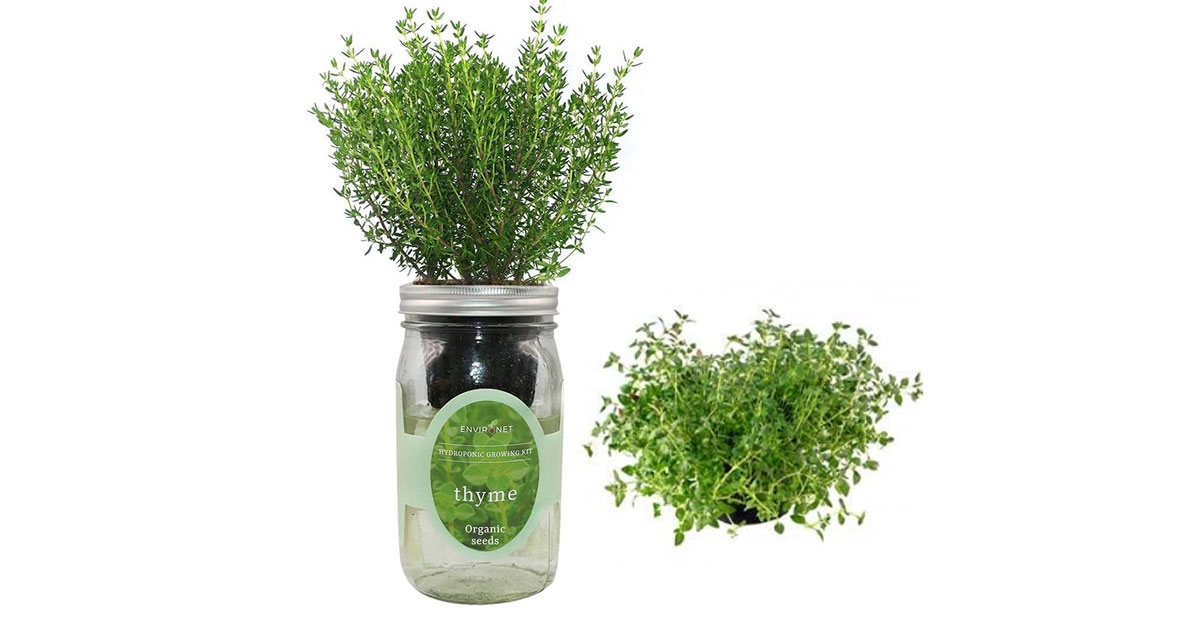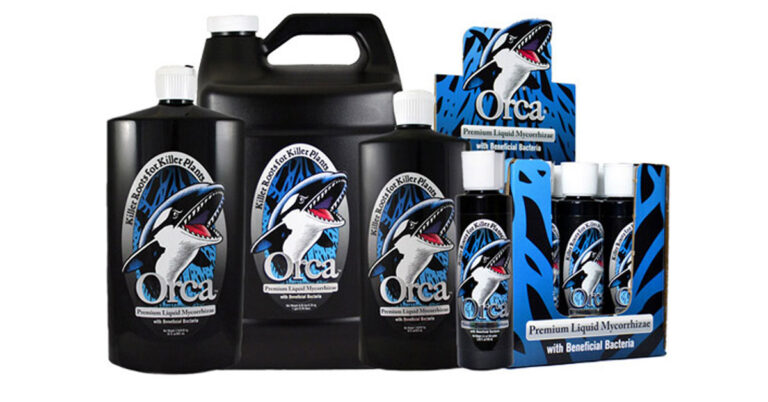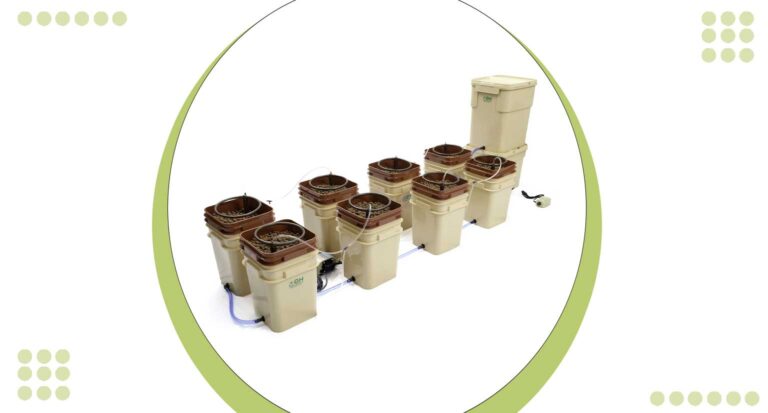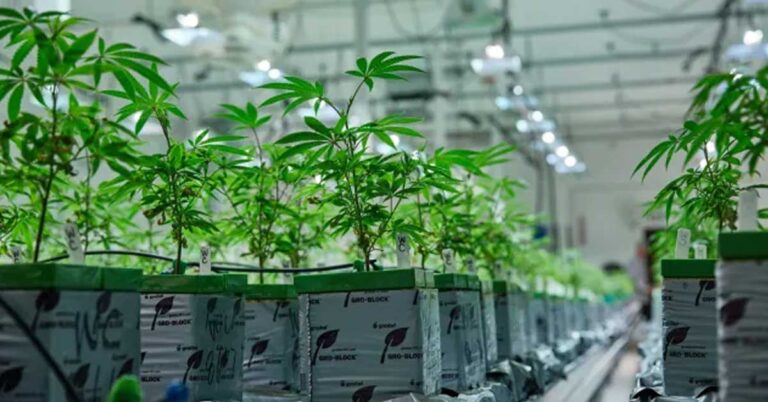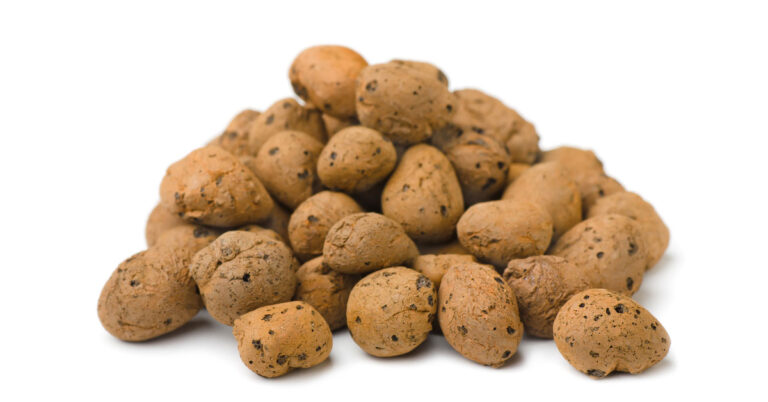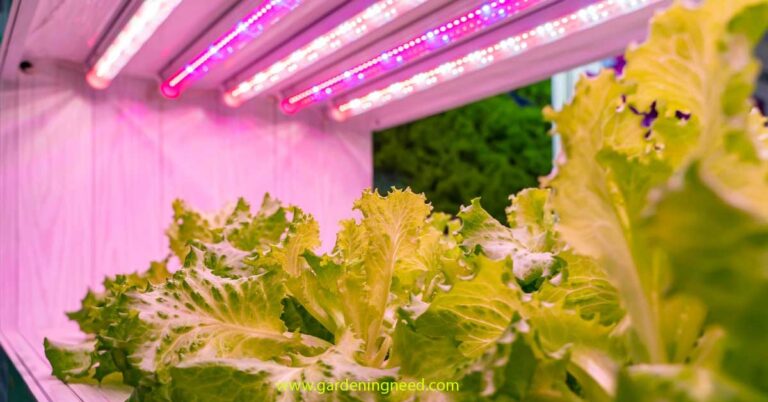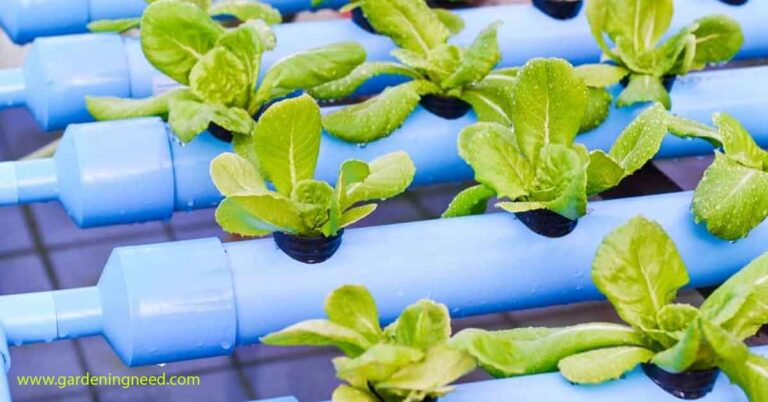Hydroponic Thyme
Hydroponic thyme, a product of innovative agricultural technology, is a form of the popular herb thyme grown without soil.
Hydroponic thyme leverages a nutrient-rich water-based solution to provide the necessary sustenance for growth, resulting in a plant that is as flavorful and aromatic as its soil-cultivated counterpart.
This method of cultivation presents a sustainable and efficient way to grow thyme, offering the potential for year-round harvests and superior control over plant health.
When growing hydroponic thyme, it is important to note that the nutrient solution must be checked regularly for quality and pH levels.
The ideal pH level should remain between 5.8-6.2, as any deviation can adversely affect the plant’s growth and flavor profile. Additionally, a well-balanced solution of nitrogen, phosphorus, and potassium should.
What Is Hydroponic Thyme And How Does It Grow
be maintained. The exact composition of the nutrient solution will depend on the specific needs of the thyme plant during different stages of growth.
Hydroponic thyme grows best under consistent light exposure. Ideally, the plants should receive between 14-16 hours of light per day.
This can be achieved either through natural sunlight or artificial grow lights. The latter can be especially beneficial during the winter months or in settings where natural light is minimal.
Proper aeration is also key to the successful growth of hydroponic thyme. The roots of the plant need access to oxygen for healthy growth.
Therefore, the water in the hydroponic system should be aerated regularly using an air pump and air stone.
In terms of temperature and humidity, hydroponic thyme thrives in a moderate climate with a temperature range of 65-75°F and relative humidity of 50-70%. Any extremes in temperature and humidity can lead to plant stress and potential disease.
In summary, growing hydroponic thyme involves careful monitoring and maintenance of the nutrient solution, light exposure, aeration, temperature, and humidity.
With the right conditions, hydroponic thyme can grow robustly, offering a sustainable and efficient way to cultivate this aromatic herb year-round.
Benefits Of Growing Hydroponic Thyme
The benefits of growing hydroponic thyme are numerous and varied. Firstly, hydroponic farming allows for precise control over the growing conditions of the plant, leading to a consistent and high-quality yield.
The hydroponic system enables growers to control the nutrient levels, light exposure, and aeration, leading to optimized growth and robust plants.
Secondly, because hydroponic thyme is grown in a controlled environment, it is less susceptible to pests and disease, thus reducing the need for harmful pesticides.
This results in a product that is not only healthier for consumption but also more environmentally friendly.
Thirdly, hydroponic systems are water-efficient and can save up to 90% more water compared to traditional soil-based farming.
This makes hydroponic thyme a sustainable choice in areas where water is scarce or expensive.
Lastly, hydroponic thyme can be grown year-round, regardless of the outside weather conditions.
This allows for a constant supply of fresh, vibrant, and flavorful thyme, making it an excellent choice for chefs, home cooks, and herbalists alike.
Overall, the benefits of growing hydroponic thyme are compelling, offering a healthier, more sustainable, and efficient alternative to traditional farming methods.
Setting Up Your Indoor Garden For Hydroponic Thyme
Setting up an indoor garden for growing hydroponic thyme is a straightforward process that requires a few key components.
Firstly, you will need a hydroponic system. This could be a commercially available setup, or a DIY system constructed at home.
The system should include a reservoir for holding the nutrient solution, a platform for supporting the plants, and a means of delivering the solution to the plant roots.
Next, you’ll need an adequate light source. While natural sunlight is always the best option, it might not be feasible for indoor settings.
In this case, artificial grow lights can serve as a suitable alternative. Make sure to provide 14-16 hours of light exposure daily for optimal growth.
Aeration is also a crucial requirement. An air pump and air stone can be used to ensure the nutrient solution is well aerated, providing the necessary oxygen for the plant roots.
To maintain a conducive environment for growth, a temperature of 65-75°F and relative humidity of 50-70% should be maintained. This can be achieved through the use of heaters, humidifiers, or dehumidifiers as needed.
Lastly, don’t forget the nutrient solution! A balanced mix of nitrogen, phosphorus, and potassium is necessary for healthy growth, and the pH level should be maintained between 5.8-6.2.
Remember, careful monitoring and maintenance of all these elements are key to successfully growing hydroponic thyme indoors. With the proper setup and care, you’ll be able to enjoy fresh, aromatic thyme all year round.
The Best Soil & Nutrient Solutions For Growing Hydroponic Thyme
While the concept of soil might seem counterintuitive when it comes to hydroponics, the term in this context refers to the inert medium that roots grow in.
The best mediums for growing hydroponic thyme are typically perlite, vermiculite, or coconut coir.
These are all inert, meaning they don’t add or subtract any nutrients from the water, and they provide excellent aeration and water retention properties.
The nutrient solution is of paramount importance in hydroponic cultivation. An ideal solution for hydroponic thyme should contain a well-balanced mixture of nitrogen, phosphorus, and potassium.
Moreover, micronutrients such as calcium, magnesium, and trace elements like iron, manganese, copper, zinc, molybdenum, and boron, must also be included in the right proportions. Commercially available hydroponic solutions generally cater to these requirements.
Additionally, maintaining the proper pH level (between 5.8-6.2) in the nutrient solution is crucial for optimal nutrient uptake.
Regular monitoring and adjustments using pH up or down solutions will ensure a conducive environment for your hydroponic thyme’s growth and development.
Lastly, remember to check and refresh the nutrient solution regularly to maintain its quality and effectiveness.
The frequency of such changes would depend on the size of your hydroponic system and the rate at which your thyme plants absorb the nutrients.
How To Care For Your Hydroponic Thyme Plants
Caring for your hydroponic thyme involves a combination of regular monitoring and proactive maintenance.
First and foremost, routinely check your thyme plants for any signs of disease or pest infestation.
Although it’s less likely in a hydroponic system, early detection and treatment are crucial to keep your plants healthy.
Additionally, keep a close eye on the nutrient solution. The pH level should be maintained between 5.8 and 6.2, and the nutrient levels should be adequate at all times. Regularly refresh the solution to ensure nutrient availability.
Make sure your thyme plants are receiving sufficient light exposure, ideally 14-16 hours a day. If you’re using artificial grow lights, adjust the height of the lights as your plants grow to maintain optimal light intensity.
Lastly, monitor the temperature and humidity levels consistently to ensure they’re within the ideal range for thyme.
Maintaining a temperature of 65-75°F and relative humidity of 50-70% will provide an optimal environment for your hydroponic thyme.
Remember, careful attention to these factors will result in healthy, aromatic thyme plants ready for use in your favorite dishes and remedies.
Tips & Tricks For Successfully Growing Hydroponic Thyme
Growing hydroponic thyme can be a rewarding experience, especially when you follow a few key tips and tricks.
- Regular Pruning: Regularly prune your thyme plants to encourage bushier growth. This will not only provide you with a consistent supply of thyme but also promote healthier and more vigorous growth.
- Adequate Spacing: Ensure your thyme plants have adequate space between them to allow for proper circulation and prevent the spread of disease. Overcrowding can hinder growth and lead to potential issues with pests or disease.
- Timely Harvesting: Harvest your thyme just before the plant blooms, as this is when the leaves are most flavorful. Also, harvesting the outermost stems first will encourage the plant to produce new growth at its center.
- Routine System Checks: Regularly inspect your hydroponic system for any leaks, blockages, or equipment failures. A well-maintained system is crucial for successful hydroponic gardening.
- Monitor Nutrient Levels: Keep a close eye on the nutrient levels in your solution. While it’s essential to ensure adequate nutrients for plant growth, over-nutrition can lead to nutrient burn and harm your plants.
Conclusion
Hydroponic thyme is a fantastic way to spice up any dish and make it instantly more flavorful. Whether you choose to buy your herbs or grow them yourself, the convenience of hydroponics offers a unique way to integrate herbs into your meal.
With its relatively short growth cycle and familiarity with easy-to-use hydroponic systems, growing hydroponic thyme is an easy and rewarding experience for any level of gardener.
It is a safe investment for anyone who wants to add the bright, herbaceous flavor of thyme without having to worry about the ingredients in store-bought brands.
If you’re looking to get your hands dirty in hydroponics, why not start with thyme? You can easily plant some seeds at home and within weeks be adding freshly grown, organic herbs into every dish. Ready to give it a try? Grab yourself some hydroponic thyme and start reaping the rewards!

